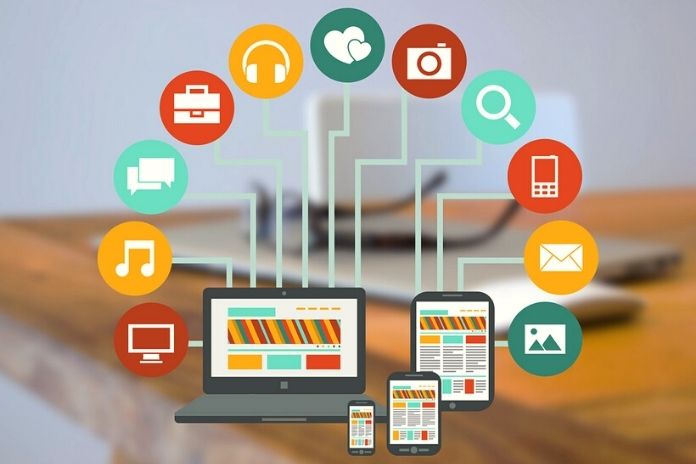All can be considered examples of IoT from the refrigerator at home, to the clock, to the traffic light. The important thing is that these objects are connected to the network and can transmit and receive data. In this way, these objects become “intelligent” and can activate and deactivate “by themselves” as needed. For example, there are intelligent traffic lights in Switzerland, which turn green when they “see” that a car is near the traffic light and that no cars are passing by on the other side.
These, like others, are examples of how objects come to life and how these objects can be connected and authentic in everyday life. Here is the future described by Orwell and the dystopian novels in the present. These connected devices and objects can, among other things, connect to data analysis software (for example, Google Universal Analytics ) and, in this way, transmit data and information from real-life directly to computers and analysis software. They are paving the way for Big Data.
Smart City
Smart cities (some call them sensitive cities) relate to urban planning strategies that improve the quality of life in the city and try to meet the needs and the needs of citizens. The technologies adopted to create intelligent cities (or parts of them) make it possible to relate infrastructures (objects) with their inhabitants. Examples are brilliant traffic lights (which turn green when no cars go by in the opposite direction), innovative waste management and disposal systems, other environmental, energy, mobility, communication, and urban innovations.
Among the sectors in which there is a greater interest at the industrial and public administration level, we note the whole world of Smart Cities, accompanied by issues related to public administration projects and more strategic issues such as those relating to Open Data.
Smart Building And Smart Home (Connected Houses And Buildings)
The substantial differences between buildings and smart homes are that, while intelligent homes are aimed above all at a ” consumer ” audience or consumers and end-users of services (examples can be regulating the temperature of the home remotely or sensors for people in the house ), intelligent buildings are mainly aimed at B2B, i.e. the construction and optimization of buildings and offices, to equip them with smart objects that interact with the internal environment (for example, light management and electricity).
The world of Smart Building continues on a double track, with a component that looks mainly at the domestic world (smart homes) and which is igniting phenomena of attention towards the consumer world and a professional member (smart building) that has now become the common heritage of development and design by designers and architects.
Smart Mobility
The issue of mobility is central to determining the quality of life in our cities, and, as has been emphasized several times, there can be no Smart City if there is no Smart Mobility. Many companies are heavily investing in this sector because, in the dimension of Smart Car and Connected Car and applications related to the world of rail transport with trains controlled by IoT, it opens up tremendous business opportunities.
Smart Agriculture
What is the impact of the Internet of Things on the environment? Precision farming or Smart Agriculture, also called Agrifood, is one of the sectors with the highest development opportunities and with the lowest penetration, to date, of digitized solutions. This is a sector that, at the level of environmental and territorial sensors, of applications for the weather, automation of equipment for the increasingly precise management of water, fertilizers, fertilizers, pesticides, needs digital solutions.
The experiences are many and only related to the use of drones, sensors that refer to the themes of the Internet of the Earth, innovative logistics solutions for Smart Agriculture, solutions for agro energy, or operations that aim to improve relationships linked to food and sustainability.
IoT And Public Administration: Transport, Energy, Sustainability, Waste, Environment
Today public administrations play a fundamental role in the development of the Interior of things. Often the technology is regulated, financed and managed by the public sector in the perspective of the Intelligent Transport System ( ITS ), which is often also the client. Two examples are cited regarding the regulatory role: monitoring the correct functioning and position of gambling machines or the mandatory introduction of smart meters for remote control and remote management.
The public entity can and must promote policy actions by allocating outstanding loans to public bodies and private companies: this can happen, for example, to reduce energy consumption or the sustainability of urban areas. Finally, the public entity is often also the client: the Internet of Things used for street lighting or preventive monitoring of the territory.
Smart Manufacturing (Industry 4.0 Or Industry 4.0)
Smart Manufacturing (also called industry 4.0 ) was undoubtedly one of the precursors of the IoT world. IoT applications have been around for many years, long before we started talking about the Internet of Things. Today this sector is one of the most mature and combines themes related to automation with articles related to the world of robotics. Smart Manufacturing also overlaps with the Industry 4.0 world, that is to say with an actual development policy to extend the introduction of digital in the world of an industry.
Also Read: Value Of The Internet Of Things: Obtainable Benefits

